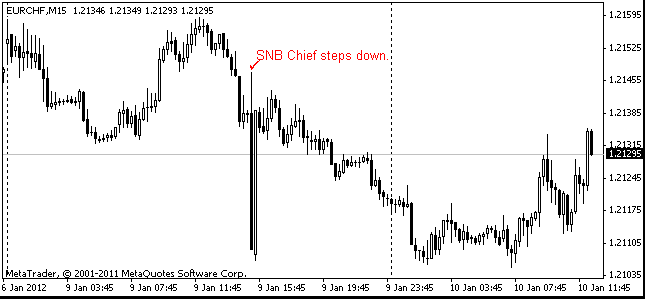EUR/usd
Interesting enough, when America's affairs are in a dreadful state, the whole world prays for mercy, but when the whole world goes to pieces, the States doesn't seem to care at all. The American S&P hasn't managed to perform any impressive bounce since the middle of the week, but still keeps edging up steadily. Meanwhile, Asian stocks are posting 5-week lows and the single currency doesn't have enough strength to recover from the sales yet. For three consecutive days certain stabilization in active European trading has been followed by the euro sales at the end of the American session. Leaving aside the sharp drop on triggering stop orders yesterday, this dynamics can be easily explained. The euro is quite steady in Europe, as the European investors are simply shifting money from one country to another, without changing the currency. At the same time, American investors prefer to hedge their external risks, buying the stocks of the US companies and selling the euro and Asian assets. It's of interest that the news from Europe should have a short-term impact only. Yesterday‘s PMI data came in very poor, showing a sharp decline in the German manufacturing activity (for the third consecutive month). The Business Climate figure also tumbled down from 109.9 to 106.9, which is the lowest level since last October. Such bounces are not typical of this indicator, in fact. The Current Assessment sub-index sank down to its lowest rates since July 2010. Need we say that the whole euro zone feels worse now? While the German Flash Services PMI stays afloat, demonstrating the same rate of growth as a month ago (the figure is 52.2), the similar indicator for the euro area has declined from 46.9 to 46.5, which is really low. The Flash PMI Composite is now at 45.9 against 46.7 a month ago. For now the signs of slowdown in the USA are little: Durable Goods Orders increased by 0.2% in April, while the Core Orders shrank by 0.6% against the expected 1.1% growth. Yet, it is just a leading indicator, so the growth won't necessarily stop. Apparently, the economic slowdown is built in the rates of stocks, which have significantly depreciated since the beginning of March.

GBP/USD
Britain is suffering a recession, but yet the sterling can hardly be called a whipping boy. The revised GDP figure for 1Q has proved to be even worse than the preliminary one. When the first estimate came in, many said that the 0.2% decline might be revised up. But the reality has turned out to be harder. Private Consumption has increased just by 0.1%. Meanwhile, imports have exceeded exports (0.4% against 0.1%), which has eventually turned against the British economy. Good news has come from the report on Business Investment in 1Q (growth of 3.6% q/q and 14.2% y/y). However, the actual activity in the service sector (80% of the British economy) grew just by 0.1% in the first three months. Apparently, investment has been triggered by a soft monetary policy of the BOE and prior depreciation of the pound. However, the growth of investment hasn't managed to boost manufacture yet because of the low demand from the Continent, which is having a hard time now. Besides, EUR/GBP is now at its four-year levels. The effect of the competitive devaluation which took place at the end of 2008 is completely exhausted.

EUR/CHF
Has EUR/CHF returned to life? Yesterday we saw a sharp upward movement in the pair (from 1.2007 to 1.2070). Earlier in April the fluctuations were not more than 20 points and in May – more than 10. Then, the swift growth could be well spurred by actions of the SNB, which has decided to remind the markets about itself. The pair shortly returned to its usual trading levels (1.2010), but something in the game has changed. Earlier today we again saw growth in the pair, it was half as much as yesterday's one. We should be ready to see that the Bank will take a more active stance on the worsening of the external commerce (exports have been declining for 2 months in a row and imports are constantly growing) and simultaneous growth of deflation (CPI is at -1.0% y/y).

oil
Oil is consolidating above 90. It has the potential to stay there for a while or even grow a bit during the weekend which is going to last till Monday inclusive for many countries in Europe and the USA. Now Oil is about to close out the fourth consecutive week with a decline. In about a month the rates from the comfortable $106 per barrel have turned into just $90. After such sharp fluctuations we can count on a correction bounce at least.
